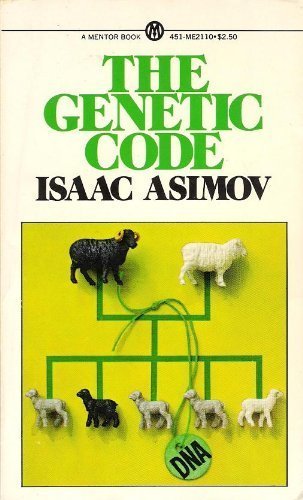Separate Together
For what is reproduction but the building up of a new organism with a detached fragment of the old? Individuality therefore harbors its enemy at home. Its very need of perpetuating itself in time condemns it never to be complete in space. The biologist must take due account of both tendencies in every instance.
—Henri Bergson, Creative Evolution 17
Metabolism and reproduction constitute the two central features of the definition of life. From the colloquial to the philosophical, the sense that living things are characterized by their ability to use food to fuel growth, heat, and movement, and their ability to reproduce more of their kind is not just widely accepted, but assumed. No need is more basic than that for food—no ability more fundamental than the capacity to convert food to energy, heat, and movement. At the same time, there is only homeostasis in metabolism—persistence of the same. Because organisms are not enormous ever-expanding blobs, and their constituent cells have finite sizes, even growth of the same individual requires the reproduction of cells. And to make a new individual body, metabolism is necessary but not sufficient. The need, as the philosopher Henri Bergson put it, to perpetuate the individual in time, “condemns it never to be complete in space,” as a little bit of it will always be needed to propagate, generating lineages over time.
Despite Bergson’s admonition that the biologist “must take account of both tendencies in every instance,” it has turned out in the twentieth century that different life scientists using different methods, techniques, organisms, and terminologies took up metabolism and reproduction—whether cellular or organismal—and they have remained largely separated into the domains of different disciplines of biochemistry and genetics. If anything, these two categories of life function have existed in a hierarchical relationship, particularly with the ascendance of genetics and molecular biology over the twentieth century, in which the reproductive, hereditary aspects of organisms were increasingly seen as carried by hypothetical units called genes, and then in the DNA molecules constituting the genome. 18 Developmental biologist Scott Gilbert has argued that there was outright antagonism between molecular biology and biochemistry at mid-century, arising from two more longstanding approaches to the characterization of the physical basis of life:
The first tradition emphasizes the phenomena of growth and replication as the major vital characteristics. Organisms are seen to increase in size and numbers and are thus akin to crystals. The second perspective focuses on metabolism as life’s prime requisite, whereby an organism retains its form and individuality despite the constant changing of its component parts. In this respect, living beings resemble waves or whirlpools … biochemistry largely retained the metabolic model of life whereas molecular biology, a discipline with ostensibly the same goals, formulated its research program around the crystalline model. 19
From the molecular biology perspective, then, the genetic code was seen to “run” the metabolic program, with the executive functions of the genome directed at regulating the action of other genes, many of which carried out essential housekeeping functions, such as cellular metabolism, a distinction borrowed from early thinking about computing machines, which of course was itself borrowed from then-current American notions of gender, work, and home. Metabolism was necessary, and because of its necessity, was kept under tight genetic control; that many aspects of genetics were elucidated using metabolic mutants is not coincidental—an error in the program resulted in an error in the outcome. 20 This separation was both conceptual and material—for example, the model organism of classic genetics and later molecular developmental genetics, the fruit fly Drosophila melanogaster, is one of the most experimented with, mapped, sequenced, and characterized organisms that biology has. It has been a key model for the neuroscience of the sensory system and the central nervous system, an organism in which to study the genetics of development and of behavior; at the very same time its visceral biology, and in particular the nervous system innervating the gut, went “largely uncharacterized” until 2011 when it was proposed as a model organism for the study of metabolic questions. 21

For the most part, this separation of the metabolic from the replicative went unremarked, even when it was perfectly visible. It was taken to be an organization of knowledge patterned by the nature of living organisms. A fine demonstration of this logic is evident in the late-twentieth-century proposal by physicist Freeman Dyson that the origin of life was itself dual. Reflecting that his illustrious predecessor, Ernst Schrödinger, had treated replication and metabolism as different chapters of his influential 1941 book What is Life?—but had not ever asked what one had to do with another, Dyson proposed it was time to ask whether “the two basic functions of life, metabolism and replication, are separable or inseparable.” 22 The answer, Dyson said, could be derived from the thinking of cybernetician John von Neumann on the automata that prefigured the first computers:
A von Neumann automaton had two essential components: later on, when his ideas were taken over by the computer industry, these were given the names hardware and software. Hardware processes information; software embodies information. These two components have their exact analogues in living cells; hardware is mainly protein and software is mainly nucleic acid. Protein is the essential component for metabolism. Nucleic acid is the essential component for replication. Von Neumann described precisely, in abstract terms, the logical connections between the components. For a complete self-reproducing automaton, both components are essential. But there is an important sense in which hardware comes logically prior to software. An automaton composed of hardware without software can exist and maintain its own metabolism. It can live independently as long as it finds food to eat or numbers to crunch. An automaton composed of software without hardware is an obligatory parasite. 23
Because molecular biologists like to study parasites such as bacteriophages—the viruses that infect bacteria—Dyson explains, there has been an overemphasis on replication, when in the real world “somebody must eat and grow to provide a home for those who only reproduce.” Thus, in the demonstration that metabolism and replication come together but are logically separable, Dyson finds the philosophically agreeable proposal that life has a dual origin—a metabolic one and a replicative one. In other words, it goes all the way back—first there were two, then one parasitized the other, and the rest, as they say, is history.
- Henri Bergson, Creative Evolution, trans. Arthur Mitchell (New York: Henry Holt, 1913) 13.[↑]
- Muller-Wille and Rheinberger 2012.[↑]
- Gilbert, Scott F. “Intellectual Traditions in the Life Sciences: Molecular Biology and Biochemistry,” Perspectives in Biology and Medicine 26.1 (1982):151-162, 152.[↑]
- Lily Kay, Who Wrote the Book of Life? A History of the Genetic Code (Palo Alto: Stanford UP, 2000).[↑]
- Paola Cognigni, Andrew P. Bailey, and Irene Miguel-Aliaga. “Enteric Neurons and Systemic Signals Couple Nutritional and Reproductive Status With Intestinal Homeostasis,” Cell Metabolism 12 (2011): 92-104.[↑]
- Freeman Dyson, Origins of Life (Cambridge: Cambridge UP, 1999): 8.[↑]
- Dyson 1999: 7.[↑]



